7 Ways to Make Spelling Logical
“English spelling is crazy!”
I hear that a lot. Perhaps you’ve even uttered that phrase yourself!
Indeed, English spelling can seem ridiculous at times. With a nod to George Bernard Shaw (who jokingly claimed that fish could be spelled ghoti), I’d like to present the following crazy spelling for the word farmer:

Makes sense, right? After all, PH can say /f/, ARRE can say /ar/, MB can say /m/, and AR can say /er/.
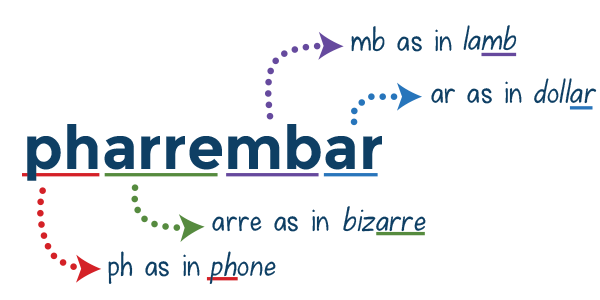
No, we’re not nuts, and thankfully, such a word does not exist. But our crazy spelling for the word farmer does illustrate an important fact: there can be multiple ways to spell a single sound. But although English spelling is much more logical than the illustration above seems to imply, there is still a little problem to overcome.
Typical Spelling Programs Don’t Make Sense
Many educators believe that spelling is too unpredictable and random to make spelling instruction worthwhile,1 and that’s why so many schools have given up on teaching spelling. Simply put, the methods they were using didn’t produce good spellers, so they dropped spelling instruction altogether. (Click to discover “How to Find a Spelling Program that Works”.)
But good spelling does matter, and spelling isn’t nearly as random as you might think.
In large part, English conforms to predictable patterns, and those patterns can be taught to your child. That means there is a better—and more logical—way to learn to spell than by rote memorization of list after list of unrelated words. (Check out my post “Does Your Child’s Spelling List Make Sense?” to find out why most spelling programs don’t work, along with a solution.)
How to Make Spelling Logical
The best way to make spelling logical is to teach it logically! The seven tips below will help make sense of spelling for you and your student.
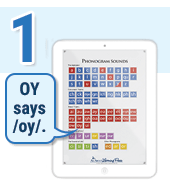
Teach the reliable sound-symbol correspondences of the first 72 phonograms.
A phonogram is a letter or combination of letters that represent a sound. At the most basic level of instruction, it’s important to show that these letters and letter combinations are the building blocks of language. Our free downloadable phonograms app makes it easy to get familiar with the sounds of the phonograms.
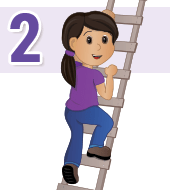
It’s critical that there are no gaps at this stage. Learning to spell is like climbing a ladder, with each skill representing a rung on the ladder. When instruction begins on the most basic “rungs,” we are explicitly providing children with the skills they need so they don’t have to guess. This helps them learn to trust their own abilities and lays the foundation for a lifetime of spelling success.
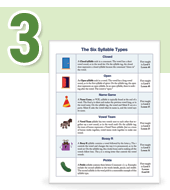
Teach the six syllable types.
Teaching the six syllable types one at time, and showing how words fit into these patterns, helps make spelling more logical. Studies have shown that students who learn the six syllable types score higher on reading and spelling assessments than students who were not given this explicit teaching.2 Learn more about the six syllable types with this handy chart.
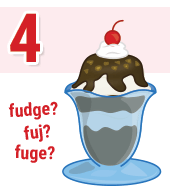
Point out predictable spelling patterns.
The English language is full of predictable patterns such as “CK is used after short vowel sounds” and “OI is used in the middle of English words, but never at the end.” For an example of this type of explicit teaching, download this lesson plan where we teach kids how to spell the sound of /j/ at the end of a word.
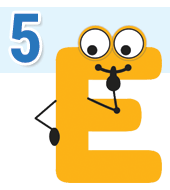
Eradicate “The Myth of Silent E.”
Dozens of phonics programs teach that Silent E makes the previous vowel “say its own name,” as in the word home. But that’s only part of the truth, and it doesn’t explain the Silent E in hundreds of words such as have and hinge. To make spelling logical, it’s important to teach all the jobs of Silent E. Download our infographic to learn more about all the jobs that Silent E performs.
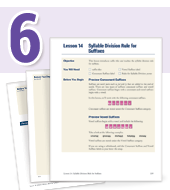
End “Suffix Confusion.”
As you teach, it’s important to make the process of adding suffixes crystal clear and logical. We make teaching suffixes simple in the All About Spelling program. As an example, here are two spelling lessons that provide an introduction to suffix syllable division rules and the consonant suffix rule.
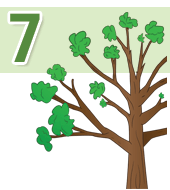
Teach the morphemic structure of words.
Words are composed of morphemes, which are the smallest meaningful units of language. One way we teach morphemic structure is by analyzing clues to the origin of words, such as words originating from French, Spanish, or Italian. Another fantastic way to study word structure is by teaching Latin and Greek word parts with word trees.
Bottom Line for Making Spelling Logical
- Use a step-by-step explicit approach, with each skill carefully building upon the previous ones.
- Draw attention to the organized, logical patterns behind English spelling.
- Highlight the consistencies of the English language and its morphemic structure.
Are you curious about the logic behind how a certain word is spelled? Post it in the comments below and I’ll choose a few words to analyze from your suggestions!
___________________________________
1Simonsen, F., & Gunter, L. (2001). Best practices in spelling instruction. Journal of Direct Instruction, 1, 97-105.
2Blachman, B. A., Tangel, D. M., Ball, E. W., Black, R., & McGraw, C. K. (1999). Developing phonological awareness and word recognition skills: A two-year intervention with low-income, inner-city students. Reading and Writing: An Interdisciplinary Journal, 11, 239–273.
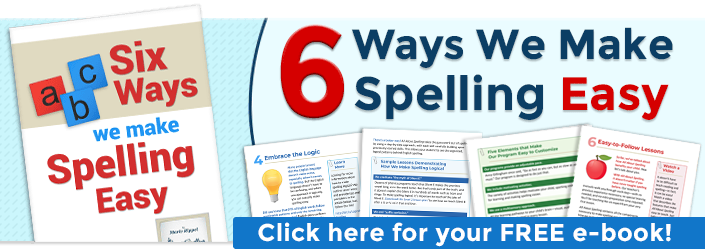




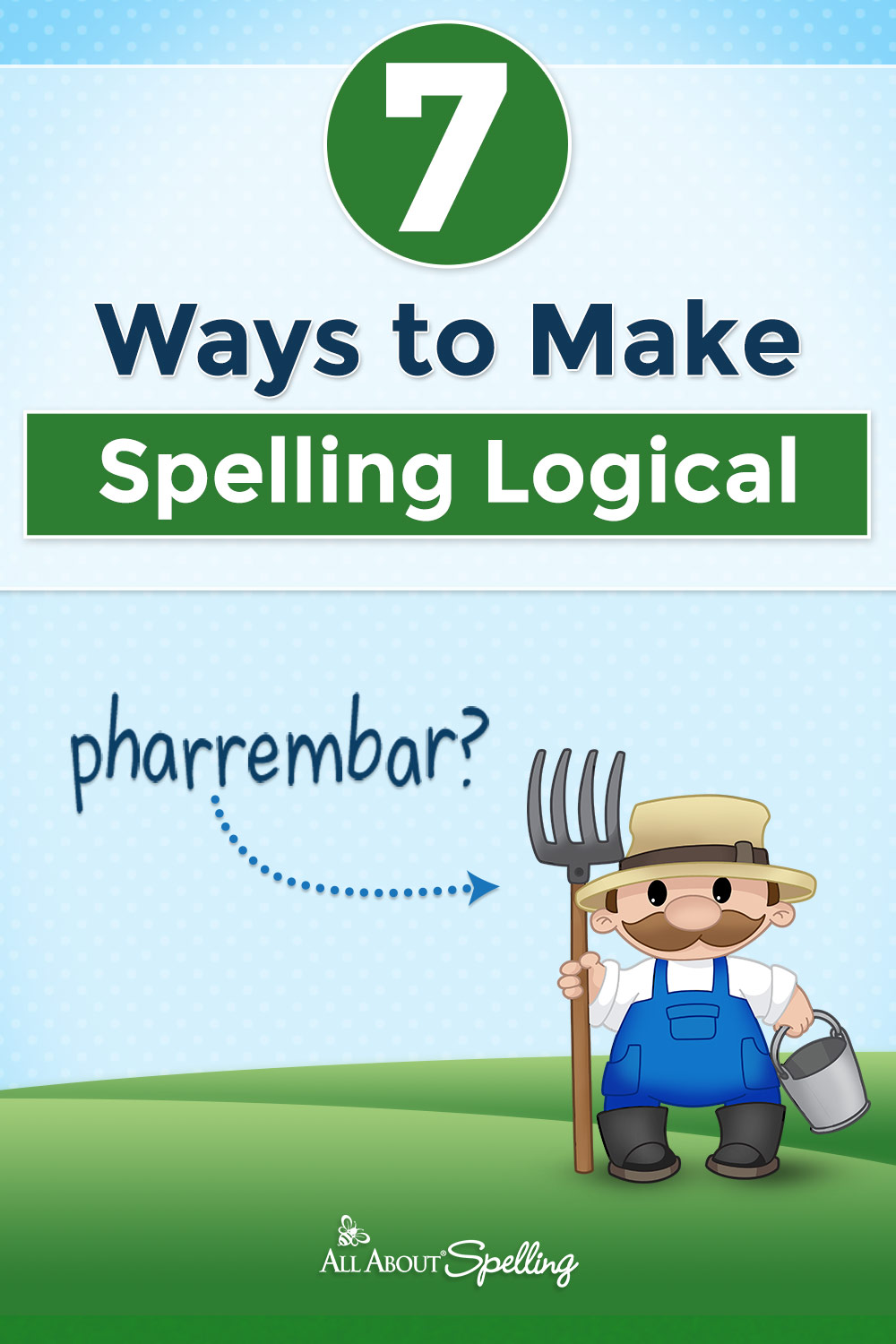










ann Cracknell
says:I am wanting to improve my approach to spelling/reading in the classroom
Robin
says: Customer ServiceWonderful, Ann! We have a blog post on 12 Reasons Teachers Love All About Reading and All About Spelling you may find helpful.
If you have specific questions or needs, please let me know.
Michele K
says:How similar is your spelling program to that of the phonetic program, The Logic of English?
Robin E.
says: Customer ServiceMichele,
There are some similarities between Logic of English and All About Reading and All About Spelling. Both cover the phonograms and the dependable rules in our language.
One of the biggest differences in our programs is that we separate reading and spelling. This allows students to move as quickly or as slowly as they need to with each skill. We find that kids generally move ahead more quickly in reading, and we don’t want to hold them back with the spelling. Students still form strong letter-sound connections, pattern recognition, and phonemic awareness skills through multiple types of activities in the reading program, and gain the benefit of spelling reinforcing these skills through its deeper application.
With All About Spelling, your child will learn how to spell more than 3000 words, and the concepts that apply to the vast majority of words in our language. Students learn to analyze words and apply the most effective spelling strategy. Good spellers use a variety of strategies: phonetic, rules-based, visual, and morphemic. Sometimes there isn’t a rule, such as deciding whether to use “er,” “ir,” or “ur” for the sound of /er/ in the word “nurse.” When this is the case, the program introduces just one spelling pattern at a time and allows the student to master that spelling for a particular sound before another is introduced. After mastering several related patterns, they will have a “mixed” review to make sure they can decide which pattern to use for each word.
Logic of English will sometimes group several concepts together or teach them within a short time. For example, in Foundations, phonograms such as IR-UR-ER are taught back to back, and in Essentials they are taught in a single lesson. This quick succession can make it harder for some children to differentiate for spelling. For other students, that isn’t an issue, so consider your child and how he or she learns.
I hope this answers your question, but please let me know if you would like more information about All About Spelling.
Christine
says:Interested
Robin E.
says: Customer ServiceDo you have any questions I can help you with, Christine? I’m happy to help.
Sara
says:The phonogram app is wonderful! This blog offers great suggestions to teach spelling. Be explicit.
Tom
says:Hey! Thank You for writing such an informative blog- content.
Good spellers use a variety of strategies for spelling. These strategies fall into four main categories, phonetic, rule-based, visual, and morphemic.
Amy Ludwig
says:I love this! It really is important to teach the logic and rules of spelling rather than just giving in to the “English is just weird” excuse!
Claire
says:Yes! I’m learning things as we go through AAR with my daughters!! I love the silent E tip – hadn’t thought about that before!!
Robin E.
says: Customer ServiceGlad to give you a new tip, Claire!
Jennifer
says:This is definitely an aspect of AAS that we appreciate. Why do we spell it that way? We have some guidelines to go by! We know which spelling for which sound is most common and learn the sounds by the most used to least used. Really thankful for the systematic approach to spelling. Thanks for a great resource!
Robin E.
says: Customer ServiceOh, you are so welcome, Jennifer! It’s exciting to hear that All About Spelling’s approach is working so well for you!
Theresa Kingsmill
says:I cannot wait to start using All About Spelling with my students’ next year! The bits and pieces in which I have used to hone some skills my current students lack, have proven effective. I have printed and read as much of the literature as I could regarding All About Spelling and the Orton-Gillingham approach. Thank you for posting so much information!
Robin E.
says: Customer ServiceI’m pleased to hear that the information on our blog has been helpful for you, Theresa! But if you have any questions or need more information, please let us know. We’re happy to help!
Cheri
says:My daughter is almost done with AAR level 1, so we will begin AAS soon. This was a helpful preview!
Robin E.
says: Customer ServiceI’m glad this was helpful, Cheri. Congratulations on nearing the end of All About Reading Level 1!
Dalia Giampa
says:Thank you for bringing help to many parents like me!
Robin E.
says: Customer ServiceYou’re so welcome, Dalia. I’m glad this is helpful!
LaQuandra Adebajo
says:Excellent. Checking into AAS now!
Robin E.
says: Customer ServiceWonderful, LaQuandra! If you have questions or need help with placement or anything, please let me know. I’m happy to help!
Julie Bryce
says:I totally believe this is quality and a great way to teach spelling!
Robin E.
says: Customer ServiceOh, thank you, Julie!
Beth J.
says:So many helpful tips! I’m going to download a few things you offered. Thanks!
Robin E.
says: Customer ServiceYou’re welcome, Beth! Enjoy!
Mary E
says:We are on the rule breaker, was. Why is it spelled that way? Wish I had a logical program to learn spelling as a kid. I’m learning too as we go through it.
Robin E.
says: Customer ServiceMary,
That’s a good question, but I am unsure of the answer. I do know that the word “was” comes to us from Old English, and it was spelled w-a-s since the time of Middle English (most of the time, spelling wasn’t standardized until a couple of hundred years into Modern English). It is likely the pronunciation of the A in “was” shifted over the centuries but the spelling did not. This is more likely to happen with words that are extremely common, such as this word.
If you haven’t seen it already, check out our blog post on How to Handle Spelling Rule Breakers. There are some great tips there!
Note that it is only the A that doesn’t say the sound we expect it to say. Focusing on what letters in a world make it a rule breaker is very helpful, as it means your student doesn’t have to memorize the entire word. The W and the S can be spelled by sound and a student needs only to remember the A.
Deborah Hunt
says:My daughter and I thoroughly enjoy this spelling program.
Robin E.
says: Customer ServiceWonderful to hear, Deborah!
Brandi
says:Thank you for this. Spelling is one of my child’s trickiest subjects.
Robin E.
says: Customer ServiceYou’re welcome, Brandi. Spelling is tricky for many students. I hope you find these helpful. If you have questions or need anything, please let me know.
Shelley
says:We love all about Spelling and reading!!!
Dawn
says:Great tips! Amazing program. Everything is so detailed and laid out so easily for us to teach our kids-Love that!
Robin E.
says: Customer ServiceThank you, Dawn! I’m pleased to hear it is going so well!
JoAnna
says:Your curriculum makes sense of spelling! I love how you lay out the concepts logically and understandably. Thank you!
Robin E.
says: Customer ServiceOh, you are so welcome, JoAnna!
Meghan
says:Your Curriculum makes learning the English language fun for my children even my three year old wanted to get in on some of the fun games my seven year old was playing from the back of the teachers guide.
Robin E.
says: Customer ServiceI love that your little one was so excited to get on the fun too, Meghan! If you haven’t seen it already, check out the many fun activities we have for Preschool Learners.
Rebecca
says:Thank you for sharing the detailed lesson plan for dge. I appreciate how things are laid out with explicit instruction.
Robin E.
says: Customer ServiceYou’re welcome, Rebecca! And thank you.
Heather
says:As an engineer, I love that All About Spelling makes spelling logical! I’ve always been a good speller, but never knew the reasons why words are spelled the way they are. With this curriculum I’m learning why!
Robin E.
says: Customer ServiceHeather,
My son is an engineer, so I appreciate the need for providing as much logic to learn as possible. I’m glad All About Spelling is helping you to learn the why of spelling!
Katie
says:Everyone always says English isn’t logical, but I love how your curricula show how it is!
Robin E.
says: Customer ServiceThank you, Katie!
Courtney
says:We love All About Spelling! I like that it’s open and go. The multi sensory approach to teaching makes it fun.
Lola
says:Fantastic tips!
Amber
says:I love the visuals along with this example. Very helpful. And we love All About Spelling!
Robin E.
says: Customer ServiceThank you, Amber!
e
says:This program is unbeatable! In All About Spelling, the children can learn at their own pace.
e
says:This program is great! Multisensory learning is vital for these children!
Alea
says:These are great! Thank you
Robin E.
says: Customer ServiceYou’re welcome, Alea!